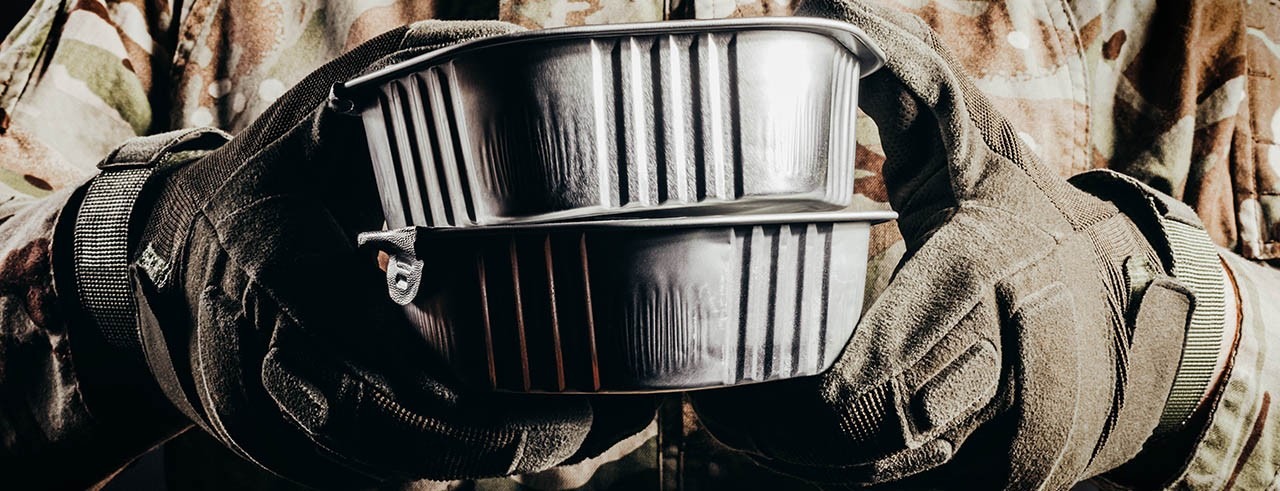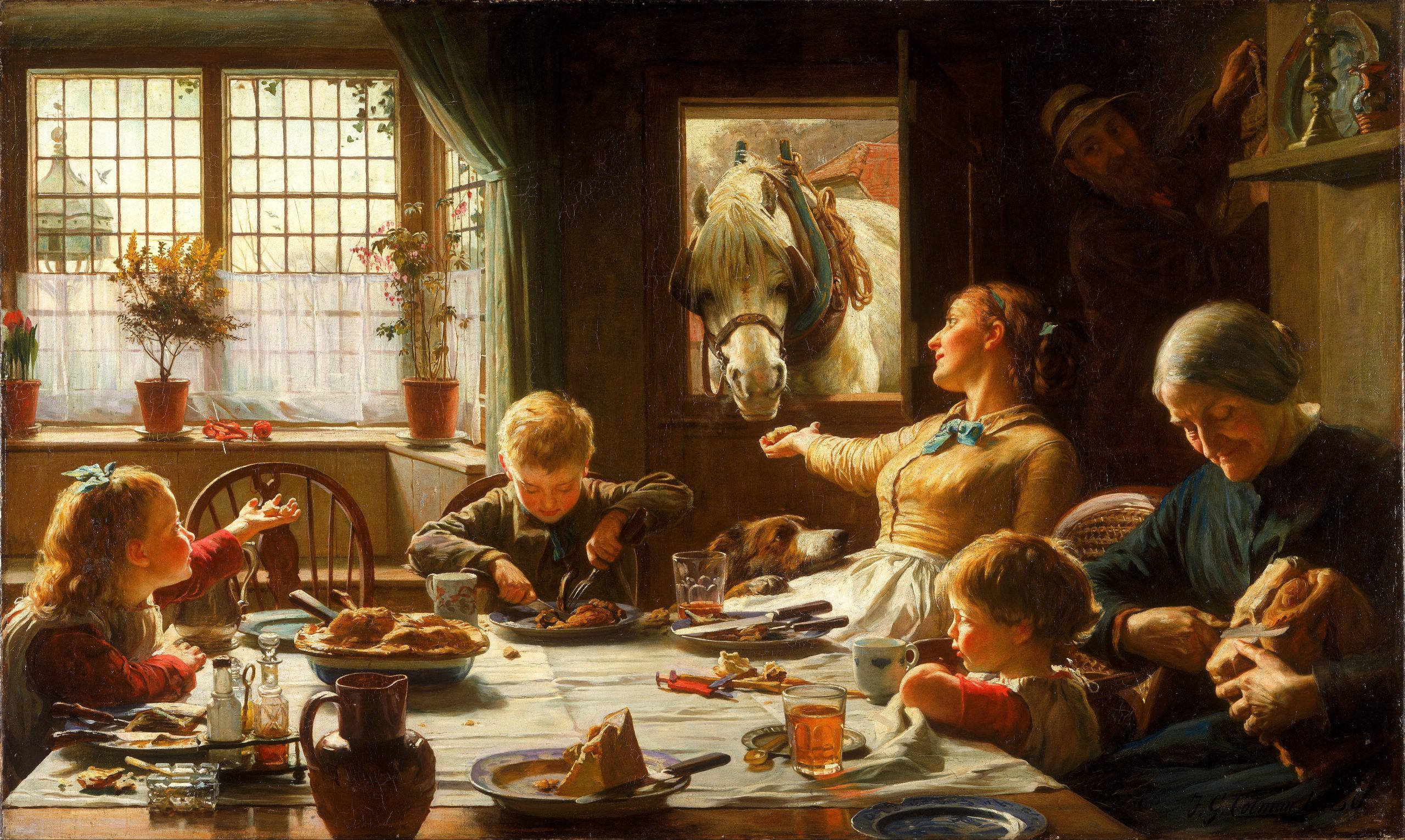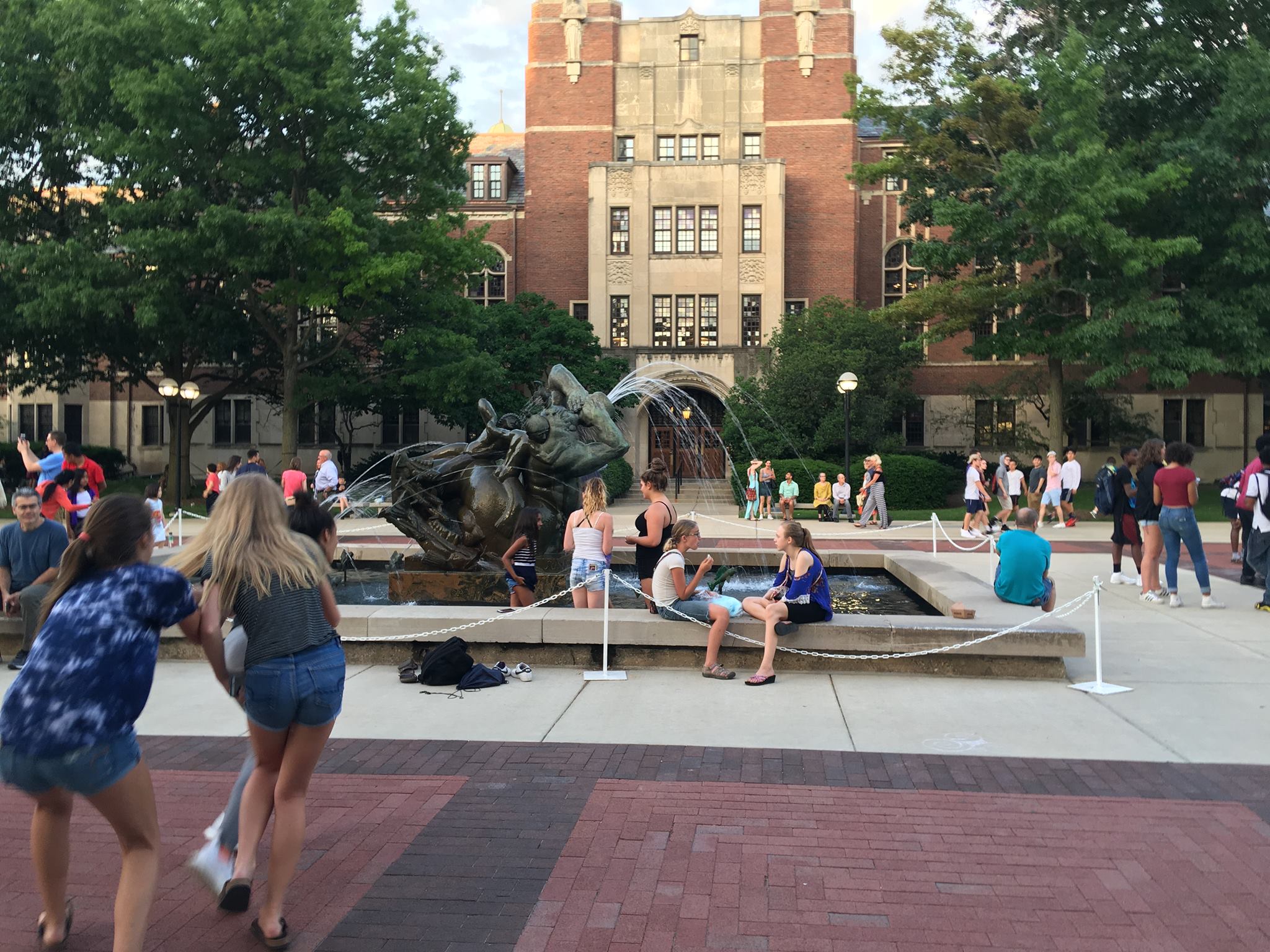Author Archives: mike@standardsmichigan.com
- Home
- Articles posted by mike@standardsmichigan.com (Page 20)

Poutine
Health Canada: Food safety standards and guidelines
University of Vermont: Poutine: From Rags to Riches

Dalhousie University researcher Sylvain Charlebois, known as “the food professor,” enjoys a poutine at a restaurant in Brisbane, Australia.
‘Girls tell about their time at Canadian College of English Language’https://t.co/SKYf5gNZLXhttps://t.co/fsQaxC1L69 pic.twitter.com/FBywkbB1BY
— Standards Michigan (@StandardsMich) July 1, 2024
Evensong “The Water is Wide”
“All my longings lie open before you, Lord;
my sighing is not hidden from you.”
“The Water Is Wide” is a traditional folk song with deep roots in the British Isles, particularly Scotland and England, before it became a beloved American folk song. Its origins are complex, as it evolved through oral tradition, with variations in lyrics, melody, and title across regions and centuries. Below is a detailed explanation of its origins and journey to becoming a classic American folk song with summer associations.1. British Isles Origins (17th–18th Century)
- Earliest Roots: The song likely derives from a Scottish or English folk ballad dating back to at least the 17th century. It is closely related to ballads like “Waly, Waly” (sometimes spelled “Wally, Wally”), a lament about love and loss. The earliest known versions appear in Scottish oral traditions, with references to broadsides (printed song sheets) from the 1600s.
- Melody and Structure: The melody associated with “The Water Is Wide” is a modal, haunting tune typical of Celtic folk music. It shares similarities with other traditional songs like “O Waly, Waly,” which was collected in Cecil Sharp’s English Folk Songs from the Southern Appalachians (1917). The song’s structure, with its simple, repetitive stanzas, made it adaptable for oral transmission.
- Lyrics and Themes: Early versions focused on themes of unrequited or lost love, with the “wide water” symbolizing an insurmountable barrier between lovers. For example, a common early stanza is:
“The water is wide, I cannot get o’er / And neither have I wings to fly / Give me a boat that will carry two / And both shall row, my love and I.”
This imagery of rivers and separation resonated in pastoral settings, often evoking summer landscapes.
2. Transmission to America
- Colonial Migration: The song crossed the Atlantic with British and Scottish immigrants, particularly during the 17th and 18th centuries, settling in regions like the Appalachian Mountains, where it became part of the American folk tradition. Scots-Irish settlers, in particular, brought ballads like “The Water Is Wide” to the American South, where they were adapted to local contexts.
- Appalachian Influence: In the Appalachians, the song’s lyrics and melody were shaped by oral tradition, with variations emerging in different communities. It retained its melancholic tone but often incorporated local imagery, such as American rivers or landscapes, which tied it to summer’s reflective, open-air mood.
- African American Influence: Some scholars suggest that African American spirituals influenced the song’s evolution in America, as its themes of longing and crossing water paralleled spirituals like “Deep River.” This blending enriched its emotional depth and melodic variations.
3. Documentation and Revival
- Early Collections: The song was first formally documented in the 19th century, with variants appearing in folk song collections. By the early 20th century, collectors like Cecil Sharp and Francis James Child (known for the Child Ballads) noted versions of “Waly, Waly” and related songs in both Britain and America.
- Folk Revival (20th Century): “The Water Is Wide” gained prominence during the American folk revival of the 1950s and 1960s. Artists like Pete Seeger, Joan Baez, and The Kingston Trio popularized it, often performing it at summer folk festivals. Seeger’s version, in particular, standardized the modern American melody and lyrics, emphasizing its gentle, summery river imagery.
- Adaptations: The song was adapted into various forms, including gospel, pop, and classical arrangements. Its inclusion in school songbooks and campfires further cemented its place in American folk culture, with its river imagery evoking lazy summer days.
6. Historical Significance
- Oral Tradition: The song’s survival through oral tradition highlights its adaptability and emotional resonance, key traits of folk music.
- Cross-Cultural Exchange: Its journey from Scotland/England to America, with influences from African American traditions, exemplifies the blending of cultures in American folk music.
- Modern Legacy: Today, “The Water Is Wide” remains a staple in folk repertoires, performed by artists across genres and taught in music education, often evoking summer’s reflective mood.
The water is wide, I cannot cross o’er,
And neither have I wings to fly.
Give me a boat that will carry two,
And both shall row, my love and I.A ship there is, and she sails the sea,
She’s loaded deep, as deep can be;
But not so deep as the love I’m in,
And I know not how I… pic.twitter.com/kEyJAAJRfG— Tar-Eämon (@SerAemond) September 25, 2025
Incorporation by Reference
A partial list of the standards developers who produce consensus documents that are referenced in education facility design guidelines and construction contracts is shown below:
In other words, apart from open-source and consortia-developed standards, the safety and sustainability of the education facility industry is almost entirely dependent upon intellectual property that must be available free of charge to the public if local and state governments incorporate them by reference to meet their pubic safety assurance obligation.
While ANSI has managed a reconciliation on the issue generically called “incorporation by reference” there a few fine points that are noteworthy. These are usually discussed during World Standards Week and summarized periodically at the link below:
ANSI GOVERNMENT OUTREACH ACTIVITIES
We refresh our understanding of this topic several times a year; typically during our Incorporation by Reference colloquium during which time we also examine state-level activity
Issue: [Various]
Category: Administration & Management, Public Policy, US Department of Commerce
Colleagues: Mike Anthony, Christine Fischer, Jack Janveja, Richard Robben
Meals-Ready-to-Eat
“An Army marches on its stomach”
— Napoleon Bonaparte
Compact, flameless heater allows for pre-packaged hot dinners
“Whether it’s chili with beans, barbecued beef or meatballs in marinara sauce, members of the United States military are served up a rotating menu of entrees through meals, ready to eat rations. Packed in individual pouches, these self-contained meals can be eaten during combat operations, humanitarian missions or field trainings, providing nourishment on the go. Yet while MREs were first piloted for U.S. military members during the Vietnam War, it wasn’t until the 1990s that it’s been possible for these meals to be served hot…
…We can thank a University of Cincinatti Professor of Mechanical Engineering for that.” (And transforming the civilian emergency food industry, to boot)
Related:
Defense Acquisition University: Specifications and Standards
Food and Water in an Emergency
Federal Emergency Management Agency: Food Safety: A Recipe for National Preparedness
Bed Time Shower Temperature
This content is accessible to paid subscribers. To view it please enter your password below or send mike@standardsmichigan.com a request for subscription details.
Optimization
This platform — some twenty years in the making — needs maintenance from time to time so today there will be no Daily Consultation (15:00 UTC) while we tidy up our firmware. Instead, we make visible so-called “Evergreen” content on our client facing page as well as links to our priority projects:
We are moving our office across from the 150 State Street office we’ve occupied over ten years to an office across the street to 455 East Eisenhower, Suite 300, still proximate to the University of Michigan South Athletic Campus, with more expansive parking shared with the Olive Garden.
Enjoy the weekend! We shall reconvene LIVE again Monday, Columbus Day, October 13th when we scan codes and standards coalescing around the artificial intelligence zietgeist.
Spring Break has been amazing this week! Principal time is shut off! Spending time with the family is turned on! Sometimes the little things in life matter the most. Birds chirping, playing in playground, nature walk, hearing church bells! Blessed! 🙏🏻✝️#BeKindWorkHardBeGreat pic.twitter.com/bEnEpAvfnm
— Nick Edwards, M.Ed (@Nick_EdwardsEDU) April 17, 2025
#TBT to these U-M students boarding buses for the winter break in 1939! 📸: Ivory Photo Collection pic.twitter.com/HVJXaVMG1K
— UM Bentley Library (@umichBentley) December 19, 2024
Night lights. 💡 pic.twitter.com/RdNjaRNLFj
— Alumni Association of the University of Michigan (@michiganalumni) December 20, 2024
Reflections on 20 years of National Electrical Code advocacy for @APPA_facilities https://t.co/V1P5XEChtz@UMich pic.twitter.com/N9Vp0whvwi
— Standards Michigan (@StandardsMich) July 11, 2016
2026 National Patent Application Drafting Competition
The NPADC is a team competition for law students to develop skills in drafting patent applications, focusing on U.S. patent law. Teams receive a hypothetical invention statement, conduct prior art searches, draft specifications and claims, and present their work to judges, including patent examiners and practitioners. For 2025, the invention was an extra-uterine system for supporting premature fetuses, indicating the complexity of tasks involved
There is no publicly available timetable for the 2026 National Patent Application Drafting Competition (NPADC) from the United States Patent and Trademark Office (USPTO) as of the latest available information. The USPTO typically releases detailed schedules for the NPADC closer to the competition year, often in the fall of the preceding year (e.g., October or November 2025 for the 2026 competition).
After months of hard work, the top five teams met at USPTO headquarters today for the final round of the 2025 National Patent Application Drafting Competition. 🏆 And the winners are … ⬇️
🥇 First place — @UofMNLawSchool pic.twitter.com/uwNSJR0oBy
— USPTO (@uspto) April 4, 2025
Thomas Jefferson was the leader in founding the United States Patent Office. Jefferson was a strong supporter of the patent system and believed that it was essential for promoting innovation and progress in the United States. As the first Secretary of State Jefferson was responsible for implementing the country’s patent system.
Article I, Section 8, Clause 8 of the United States Constitution reads as follows:
“The Congress shall have Power To promote the Progress of Science and useful Arts, by securing for limited Times to Authors and Inventors the exclusive Right to their respective Writings and Discoveries.”
In 1790, Jefferson drafted the first Patent Act, which established the procedures for applying for and granting patents. The act also created the United States Patent Office as a government agency to oversee the patent system. Jefferson appointed the first Patent Board, which was responsible for reviewing patent applications and making recommendations to the Secretary of State.
Jefferson was deeply involved in the early development of the Patent Office and was instrumental in shaping its policies and procedures. He believed that the patent system should be accessible to all inventors, regardless of their social or economic status, and he worked to streamline the patent application process to make it more efficient and user-friendly.
In recognition of his contributions to the development of the patent system, Jefferson is often referred to as the “Father of American Innovation.”
This clause grants Congress the authority to establish a system of patents and copyrights to protect the intellectual property of inventors and authors. The purpose of this system is to encourage innovation and creativity by providing inventors and authors with a temporary monopoly on their creations, allowing them to profit from their work and invest in future projects. The clause also emphasizes the importance of promoting the progress of science and the useful arts, reflecting the belief of the founders that the development of new technologies and inventions was essential for the growth and prosperity of the United States.
Over the years, the Patent Office has played a crucial role in the development of the United States as a technological leader, granting patents for inventions ranging from the telephone and the light bulb to the airplane and the computer. Today, the Patent Office is part of the United States Department of Commerce and is responsible for examining patent applications and issuing patents to inventors and companies.
Welcome to the 2025 National Patent Application Drafting Competition!
2024 National Patent Application Drafting Competition
Congratulations to the winners of this year’s National Patent Application Drafting Competition – Khailee, Bree, Rita, and Maria from @gwlaw, and thank you to all participants! Learn more about the competition: https://t.co/gB64fnXaM6 pic.twitter.com/FWqak6Mr1m
— USPTO (@uspto) April 14, 2023
From creating a race car safety device that protects drivers from injury to revolutionizing chemotherapy, Spartans have contributed to more than 3,300 inventions. #SpartansWill pic.twitter.com/dchCs0BFBx
— MSU (@michiganstateu) February 21, 2025
New update alert! The 2022 update to the Trademark Assignment Dataset is now available online. Find 1.29 million trademark assignments, involving 2.28 million unique trademark properties issued by the USPTO between March 1952 and January 2023: https://t.co/njrDAbSpwB pic.twitter.com/GkAXrHoQ9T
— USPTO (@uspto) July 13, 2023
Standards Michigan Group, LLC
2723 South State Street | Suite 150
Ann Arbor, MI 48104 USA
888-746-3670

























